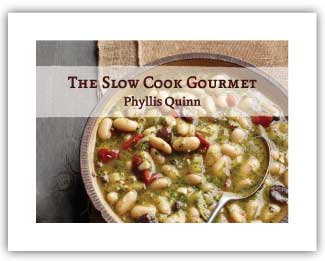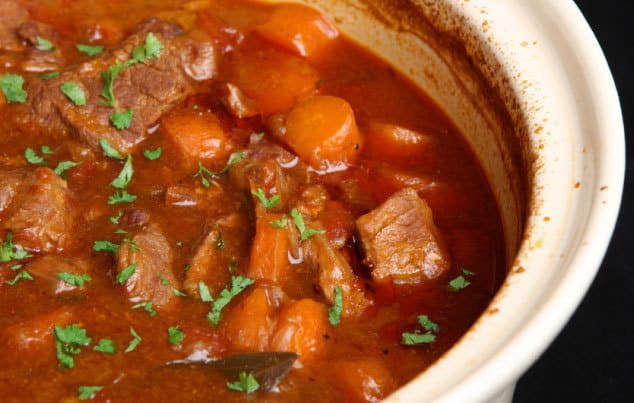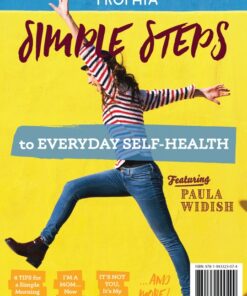When the temperature cools and the leaves begin to change color, I always seem to get the urge to dust off my slow cooker. Not that it’s neglected at other times of the year—after all, what better way to keep your baked beans warm at the neighborhood cookout? But fall and winter are definitely the seasons when I give this poor appliance a real workout.
When I first started using a slow cooker, my results weren’t always successful. One big issue was that many times the dish would end up looking very…monochromatic. Certain vegetables, like greens and peas, would mute into a brownish color similar to that of whatever meat I’d cooked them with. Sure, the flavor was acceptable—but we do tend to eat with our eyes as well, right? The look of the greens, not to mention the mushiness of the peas, meant no one got super excited about what was perched on their plates. Myself included.
But this handy, don’t-have-to-think-about-it method of cooking is, well, too handy to give up, so I began searching for a solution. I asked myself what made sense. My first thought was that when you cook a meal using your oven and stovetop, you rarely get the green beans going at the same time you throw the chicken in to roast. So it stood to reason that maybe if I wanted the vegetables to stay more vibrant and less mushy, perhaps they didn’t need to go into the slow cooker at the same time as the meat. “That could work,” I thought to myself. I gave it a go and, by golly, when I added these types of vegetables in toward the end of the cook time, they came out looking much more like their original selves. Excellent.
Now when my schedule allows for it, I use this method when fresh, more delicate veggies are called for. I simply add them when we get home and let them cook for 20–30 minutes while the boys do their homework and I sort through the mail. Works like a charm.

As I searched for more information on how to get the most out of my slow cooker, I learned that the low and slow method has health and nutrition benefits too. “The Slow Cooker Rules,” an article I came across on the Weston A. Price Foundation website, reminded me that the idea behind the slow method has been around since we humans started cooking—think braising and Dutch ovens. I also learned that slow cooking prevents the creation of advanced glycation end products, or AGEs, that come from using high and dry temperatures for cooking. The harms caused by AGEs are seen in more body inflammation and a sped up aging process, and they’re also known to threaten the integrity of our body’s cells. Slow cookers just might make an appearance more frequently around my house.
Do you have any tricks for using your slow cooker successfully? What’s your favorite recipe?
Photo of stew from iStock/JoeGough
Related Topics
healthy recipes | whole food nutrition
 Get self-health education, nutrition resources, and a FREE copy of A Terrible Ten: Health Foods That Ain't ebook.
Get self-health education, nutrition resources, and a FREE copy of A Terrible Ten: Health Foods That Ain't ebook.

